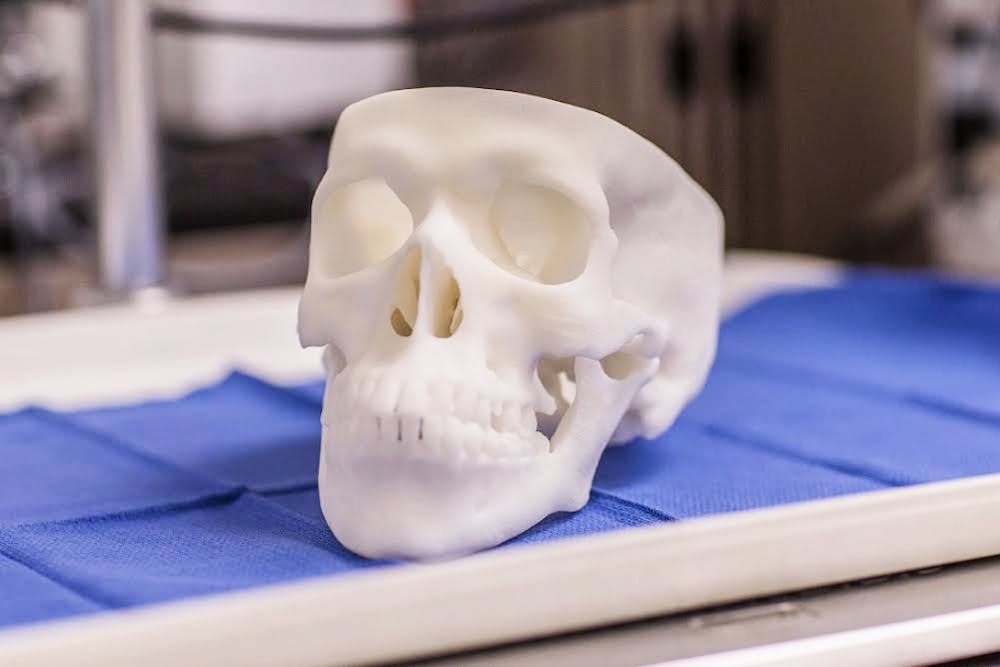3-D printing technology offers great potential in fields as diverse as space exploration — with the printing of a ratchet wrench at the International Space Station’s own 3-D printer — and even nutrition — with Columbia University’s 3-D food printer.
Now, Dwight Dart, a Design Lab Engineer and Director of the Advanced Manufacturing and Rapid Prototyping Lab, and Dr. Jose Gurrola II of the Otolaryngology Department are using 3-D printed skulls to aid resident training at the University Medical Center.
“3-D printing is being used in every field — the lab has clients in plastic surgery, school of medicine, biomedical engineering, physics, electrical engineering, Darden [School of Business], architecture, art, biology etc,” Dart said.
Medical residents generally practice their newly learned skills on either each other or with patients. These skulls, like other 3-D printed medical models, are based on MRI and CT scans. The models provide medical students with a resource to practice endoscopies in a setting free from potential patient or peer discomfort.
Dart and Gurrola designed these skulls specifically to aid in the perfection of endoscopic techniques. Endoscopy uses a flexible tube to allow doctors to look inside a patient. For example, the tube is inserted through the mouth is used to inspect the digestive tract. The scope’s camera allows for visual inspection, but the instrument may also be used to extract tissue specimens for lab analysis.
“When I was learning how [to] perform endoscopy, we had to use a buddy system,” Gurrola said. “As I advanced in training, I would sometimes let others scope me. I knew there had to be a different method we could come up with that would be durable enough to be reusable but easy to use and create so that we could enhance the learning of our students, residents and other trainees.”
According to Dart, Gurrola approached him and asked about the services offered by the 3-D printing lab with the intention of printing training models for University residents. The University lab offers Fused-Deposition Modeling (FDM), which uses filament fused by heat to the melting point of plastic and then layers the material in cross-sections for the design. Poly-Jet, the other method utilized by Dart’s lab, uses ultraviolet (UV) light to harden liquid plastic in a similar layering format.
Dart expressed excitement for the breadth and speed which 3-D printing has, and will expand in the future.
“3-D printers will be faster and more accurate over time, but the biggest change we will see is in the materials that will be 3-D printed,” Dart said. “In the not-so-far future, we will 3-D print human organs for transplant using the patient’s cells that were generated by their DNA. This will begin to eliminate the organ donor problem we have in society today.”
In particular, Gurrola sees further potential for 3-D printing to come to the forefront of medical student and resident teaching at the University.
“As technology continues to advance, I think there are numerous avenues for improved teaching,” Gurrola said. “We are hoping to ensure that we maintain U.Va. at the front of these new methods.”







